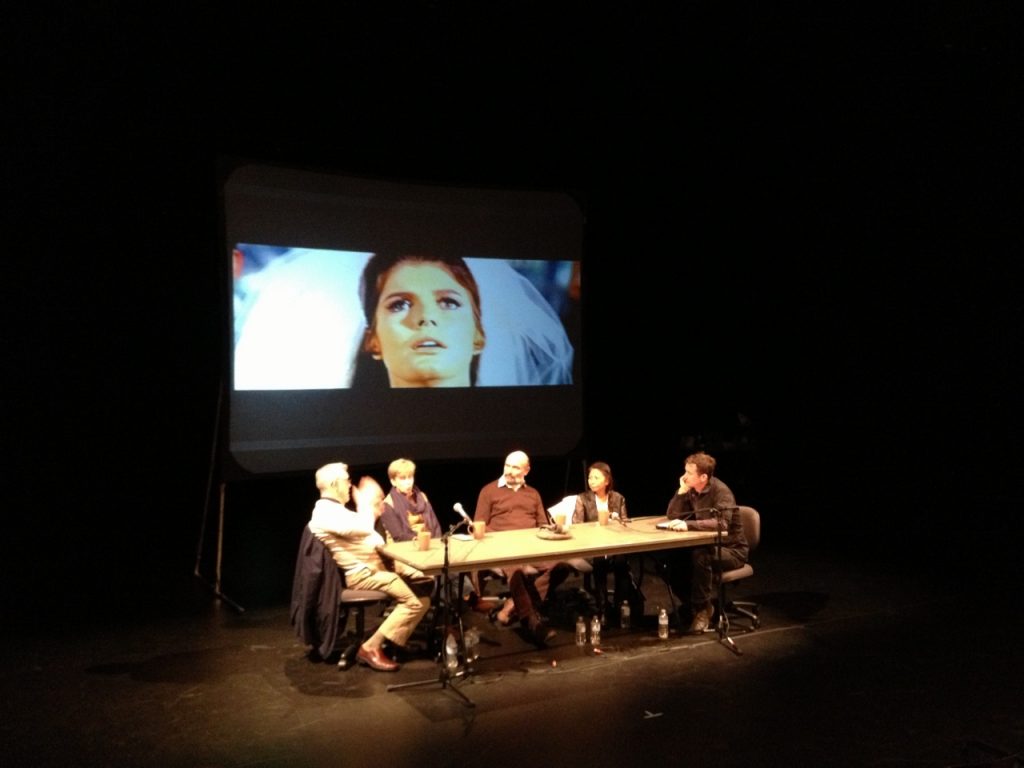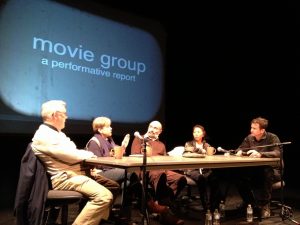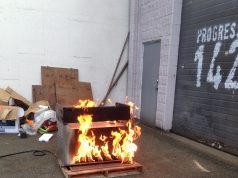
These thought are being jotted down while not playing “pet shop” with my 5-year-old daughter – so I apologize for the dashes – the rambling – the fragments – its hard to concentrate. I suggest if you are still reading this, to read it fast – let it skip along. If you do that I’ll try to hunt down the typos. Pet Shop. I can’t tell what pet shop is exactly, other than it involves hiding under a laundry basket and talking to oneself. Pet Shop makes me think of my own increasing tendency to talk to myself – a new and embarrassing habit I usually try to cover up by pretending I was singing.
I figure I speak my thoughts out loud when I can no longer sort them inside my own brain – when I have too much going on – when I can no longer compartmentalize or prioritize and the important thoughts are forced to crawl out and wave their arms around in front of me. My daughter is doing this under her laundry basket. The rules of pet shop seem pretty involved – too big for her skull – so she speaks them out loud. Makes them visible in the space around her. Creates a space so she can create perspective. Something adults reserve for conversations with other people… or typing.
A couple years ago, Theatre Replacement, a company I run with Maiko Yamamoto, set up a weekly project called Movie Group, where we met with people over the age of 65 to watch a bunch of movies made between 1965 and 1975. A time when the participants would have been 18-30 years old and made up the primary movie going demographic according to consumer stats site we found.
The intention of Movie Group was to spend time watching the films with these people and then have conversations – to see how a time-based medium could generate a larger space for thought inside a group. We recorded the conversations with the intention of creating a performance from the verbatim texts but the desire for a finished product disappeared fast. What developed over our 16 or so weeks together was too intimate – too personal. Repeating it would have been crass and disrespectful to we had found together – a magical pressureless space. What we did in the end was show bits of the movies and talk for about an hour – enough to be evidence of what we had been up to, but not so long as to assume that what we found in our little room was designed for anyone other than us.
The filmmaking from that era is pretty spectacular – massive performances wound into small stories. Turns out this leads to good conversation. The Graduate (watch it just for the last scene… and Anne Bancroft) drew out our various experiences in childrearing – and of being children. Midnight Cowboy sparked confessions about “our own personal Miami’s” or – dream situations to live. If that doesn’t make any sense to you, watch the film and while you’re there fall in love with Jon Voight – so young, so innocent and so much more badass than his daughter Angelina Jolie could ever be. Robert Altman’s McCabe and Mrs. Miller led us to thoughts around place – about belonging – about decisions to leave the town you were born which for this group included small town BC, Ottawa, Burnaby, Saskatoon, Northern England and Hong Kong.

The Graduate drove us deep into fashion. At one point we all brought in photographs of ourselves from that period. Maiko and I were only babies but still we were all so well framed and posed. In the case of Sylvia who had grown up in Hong Kong, her photos were studio shots, and this led to a long conversation about how the act of photography has become so flippant, a throw-away as opposed to an archiving of a something significant. I argued for quantity. They insisted on quality. We brought in more photos to illustrate the point. But this was not a debate over which era was the better. Rarely did the point of age ever come up in conversation. We were cross-referencing perspective across generations.
Our Englishman in residence Michael was keen on us watching A Man for All Seasons, the story of Thomas More refusing to annul the marriage of Henry the VIII. This, our only non-American film, sparked a days long conversation on the idea of the hero. Pretty much all the US films we had watched depicted unreliable protagonists. We determined, correctly or incorrectly, and without a touch of Wikipedia, that this era of American film-making marked the rise of the anti-hero, usually depicted by shortish men (glorious Mr. Voight excluded) working deep inside the Method. The reasons seemed pretty clear – Charles Manson and his family had effectively killed the hippie dream, Kent State had shaken the country, Viet Nam was raging, civil rights kept stumbling and filmmakers were subsequently making films that reflected an embarrassed nation. Kind of like the mumble core, multiple losers and troubled superheroes of the 2000’s. Were these theories sound? Didn’t matter. They were collectively determined, they felt right, and that made them sound enough for the moment.
We entered the project hypothesizing that the experience of people re-watching something first watched 40 years ago might trigger a bunch of personal memories we would cherry pick and then structure on stage. That didn’t happen exactly – certainly not within our wavering scientific method. What Movie Group did create was a zone for cross-generational perspective – something I unfortunately never make time for unless, like this, it can be disguised as work.
So, Pet Shop. I gave my 5-year-old two dimes that I had in my pocket and she crawled out from under the basket wearing a cat suit complete with tail and ears. She rubbed against my leg and bit my foot, which was nice.









